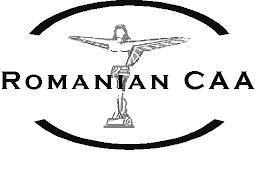Starting with 11.11.2018, following the entry into force of the provisions of Regulation no. 1139/2018 the powers of the European Aviation Safety Agency (EASA) have been extended, EASA having the power to develop and propose to the Parliament and the European Commission, for approval, normative acts aimed at establishing conditions for conducting flight activities in European aircraft, with any type of civil aircraft (including unmanned aircraft).
In practice, this means that national regulations laying down the legal conditions under which unmanned aircraft flying with a maximum take-off mass of less than 150 kg can be planned and conducted can be progressively replaced in 2019 and 2020 by the new European normative acts. The new regulations will have the role of establishing the legal conditions for the planning and conduct of unmanned aircraft flight activities applicable in all EU Member States, encouraging both the development of innovative applications and the creation of a single European market for public services provided by aircraft. without a pilot.
In order to ensure the safe use of unmanned aircraft, the legislation will facilitate compliance with the legal provisions on the right to privacy of all citizens and help to address issues of security, public order and the environment, issues raised by Member States' experts in within the process of their elaboration. In addition, the regulations will allow the implementation of an air traffic management system in the case of unmanned aircraft (U-space), a management system necessary for the development of air operations with unmanned aircraft beyond the line of sight and crowded areas.
The normative acts under elaboration are based on the following principles:
1. A risk-based and proportional approach: The new legislative framework introduces three categories of operations (open, specific and certified) depending on the level of risk involved. The legal requirements for the design and production of unmanned aircraft as well as those for the planning and conduct of flight activities will be adopted for each category. Low risk operations ("open" category) will not require special authorizations, but will be subject to strict operational restrictions. For medium risk operations, aircraft operators will be required to request authorization from national civil aviation authorities based on a standardized risk assessment or a specific scenario (specific category). Finally, in the case of high-risk operations, the classic aviation rules (certified category) will apply.
2. Division of responsibilities between the EU and the Member States: In order to bring the necessary flexibility, Member States have the power to establish airspace restricted to unmanned aircraft access or, on the contrary, to relax existing conditions. The registration of aircraft and the issuance of the necessary authorizations will also be implemented at national level, based on common rules.
In the first quarter of 2019, the European Commission intends to adopt two new regulations on drone operations as follows:
the first regulation is to establish the rules and procedures for the authorization of flight activities with unmanned aircraft;
the second regulation is to establish the technical specifications applicable to unmanned aircraft intended to be used in the "open" category.
Both normative acts under elaboration / approval are based on the provisions of "Opinion 01/2018", a document published by the European Aviation Safety Agency (EASA) on February 6, 2018.
More details on this topic here.
